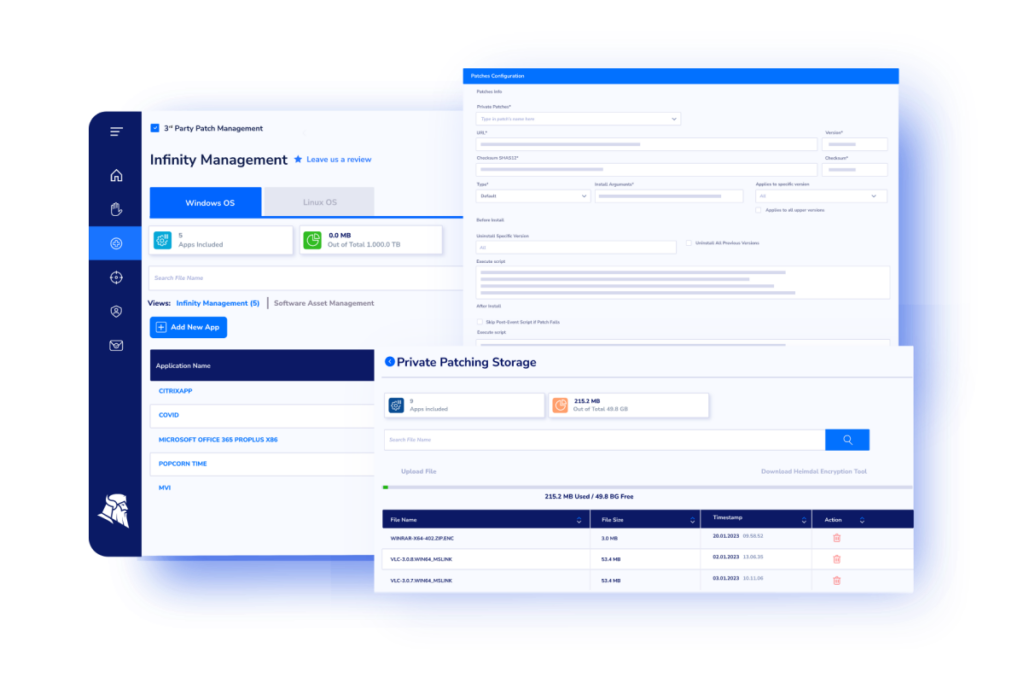Contents:
Looking for Automox alternatives might reveal options that would better suit your needs. While Automox is a well-known option for automating patch management and cloud-native endpoint protection, some users find it resource-intensive and costly for what it offers.
Below, we compare the best Automox alternatives, highlighting their strengths, weaknesses, and unique capabilities. The difference lies in their features, pricing, and efficiency.
Key takeaways:
- Heimdal Patch & Asset Management – Fast, secure patching with deep security integration and rollback option for OS updates.
- ManageEngine Patch Manager Plus – Versatile patching across OSs with strong automation.
- Ivanti Patch Management – AI-driven patching focused on risk-based prioritization.
- ConnectWise Automate – Scalable automation for complex IT environments.
- Pulseway Patch Management – Mobile-first platform for remote patch management.
- Datto RMM – Patch rollback and ransomware protection built-in.
- NinjaOne Patch Management – Simple, automated patching for SMBs.
- SecOps Solution Patch Management – AI-powered patching with SecOps workflow integration.
1. Heimdal Patch & Asset Management
Heimdal’s Patch & Asset Management offers safe remote endpoint management, automation of processes, and other security-enhancing features. The solution streamlines patching across Windows, Linux, and Mac OSs. This makes it a top choice for large businesses.
What makes Heimdal the best alternative to Automox?
Heimdal’s Patch & Asset Management solution stands out by addressing some of the key concerns users have with Automox, including:
- Safer patch deployment: As part of the patch management process, Heimdal encrypts update packets in transit, reducing the risk of tampering.
- Faster deployment: Heimdal has the shortest vendor-to-end-user patching time on the market —under 4 hours, including testing.
- MSP-friendly management: The multi-tenant dashboard simplifies client management for managed service providers (MSPs).
- Comprehensive security integration: You can use Heimdal’s Patch Management with tools from other vendors.
- Flexible deployment: Supports both cloud and on-premises infrastructures, providing greater adaptability for enterprises with complex IT environments.
- User-friendly interface: Heimdal’s intuitive dashboard ensures efficient patch management with minimal learning curve.
What do customers say?
We use Patch Management, E-mail Security and Remote Desktop modules from the Heimdal portfolio. All these products run through a single agent and consistently perform well. We push Microsoft patches every month to clients and servers without issue (and more reliably than something like WSUS), Remote Desktop is simple to use as an admin, just right-click the agent search for the user you want to connect to and go, and E-mail Security Spam filtering catches the majority of the bad things.
Heimdal also creates a decent asset register for each device you install the agent on. Support is also responsive and helpful, normally coming back with an answer in only 30 minutes!
Main capabilities
- Automated patch management across OS and third-party applications.
- Secure software distribution with encrypted updates.
- Customizable deployment policies and compliance tracking.
- Multi-tenant dashboard for easy MSP patch management.
- Real-time vulnerability scanning and remediation.
- Rollback operating system updates
Customers dread updating the operating system. They often postpone updating for 2-3 weeks, so they can see how the updating went for others. They fear that new versions might bring unknown bugs.
But, as you know, applying updates is a task you want to complete as fast as possible, to avoid hackers exploiting known vulnerabilities. Heimdal offers the opportunity to speed up the process, while also staying safe.
Heimdal’s Patch and Asset Management module enables you to rollback operating system updates.
Set up the module to automatically create restore points before an update. There is a rollback scheduler so you can create reset points regularly: daily, weekly, monthly, etc. Or do the settings manually if you want. From the dashboard, simply create a secure restore point prior to installing the update.
Mikkel Pedersen, Head of Global Sales Enablement at Heimdal®
Pricing
Heimdal offers customized pricing that fits various business requirements and usage patterns. To see Heimdal in action watch the video below and book a custom demo.
Heimdal’s patching tool, which I use for our devices, helps apply available patches automatically. Once the vendor releases an update, we apply it. Through the Heimdal dashboard, I can check the vulnerabilities of an app, how high their severity score is based on CVSS, and whether there’s a patch available to close the vulnerability. I also don’t need to manually install or test the patch. Being able to do all of that in one click through the Heimdal dashboard saves lots of time.
Alex Panait, System Administrator

2. ManageEngine Patch Manager Plus
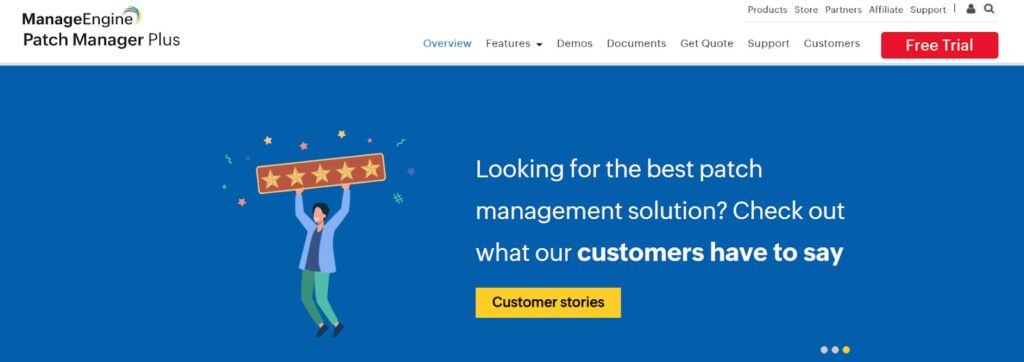
ManageEngine Patch Manager Plus aims to make endpoints’ security across different OS platforms an easy job. The solution automates patching workflows for both OSs and third-party software. It supports businesses to maintain compliance and reduce security risks without manual intervention.
Main capabilities
- Supports Windows, macOS, and Linux patching
- Cloud-based and on-premises deployment options
- Third-party application patching
- Compliance reporting and vulnerability scanning
Cons
- User interface can be complex for beginners
- Deployment speed is slower compared to Heimdal’s
- Level zero support is unresponsive, making issue resolution frustrating
Pricing
ManageEngine offers a free trial, and customized quotes based on your business needs. The website doesn’t offer other information about pricing.
Having used ManageEngine ServiceDesk for quite some time now, I have to say there are a few areas that leave much to be desired. The pricing structure is a bit of a sore point for me, especially considering the limited functionalities it offers compared to other top-tier products in the market. But perhaps the most frustrating aspect for me is the level zero support processing for end users. It often feels like I’m hitting a brick wall when trying to resolve basic issues, and the lack of responsiveness in this area is a significant letdown.
3. Ivanti Patch Management
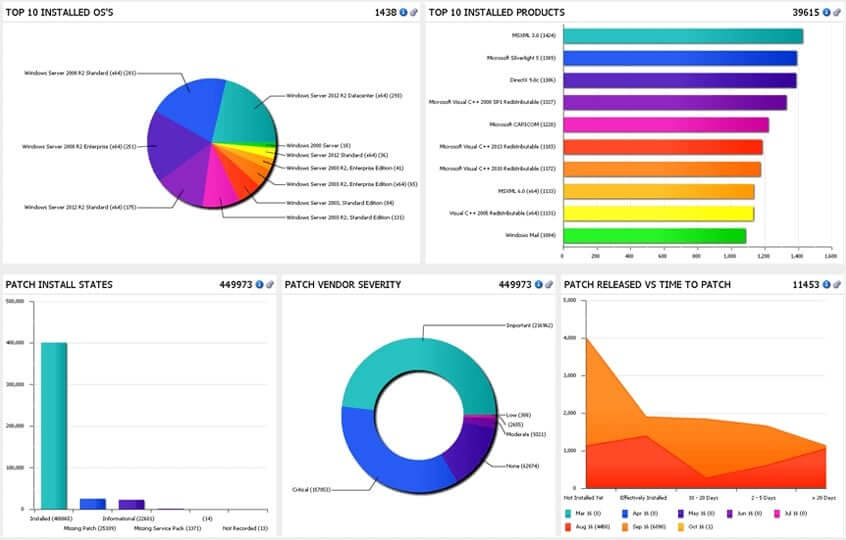
Struggling with patch prioritization is a common challenge for businesses. Ivanti Patch Management helps IT teams focus on the most critical vulnerabilities first. It assesses the company’s specific risk levels to ensure that high-priority threats are closed first.
Main capabilities
- Automated patch deployment across multiple operating systems
- Prioritizes patching based on risk assessment
- AI-powered automation and proactive issue management to minimize downtime and improve user experience
Cons
- Higher learning curve due to extensive feature set
- Can be resource-intensive on large networks
Pricing
Pricing is quote-based, and Ivanti offers different pricing tiers depending on business needs.
4. ConnectWise Automate
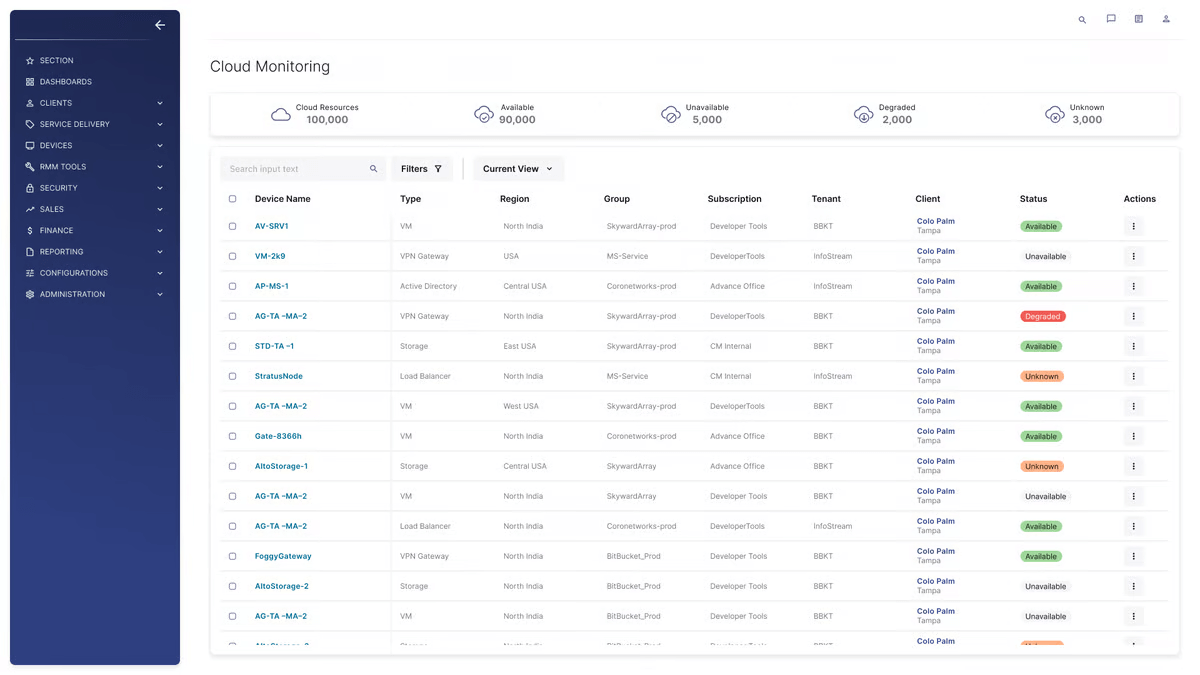
MSPs and IT teams that manage large infrastructures need scalable solutions. ConnectWise Automate reduces the need for manual oversight while improving endpoint security across multiple clients.
Main capabilities
- Remote monitoring and management (RMM) with automated patching
- Customizable scripting for patch deployment
- Detailed reporting and analytics
Cons
- Requires high-skilled personnel for full optimization
- Some users report delays in patch application
I was warned that it is a BEAST to learn. I extremely understood how much involvement would be needed to learn how to even deploy on a small number of clients. They have resources and consultants and a university to learn how to use the product. After 2 months I gave up. I can’t imagine training someone in my company how to do all I learned.
Pricing
Pricing is subscription-based and depends on the number of endpoints managed.
5. Pulseway Patch Management
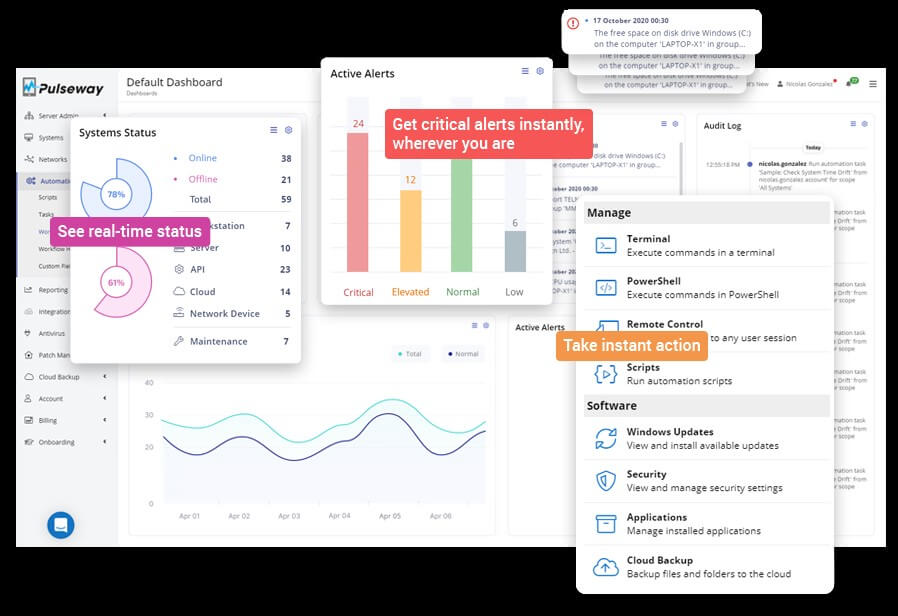
IT teams in industries like healthcare, retail, and managed IT services often need to manage devices remotely. Pulseway’s mobile-first approach enables admins to deploy and monitor patching from anywhere.
Main capabilities
- Mobile-first IT management platform
- Automated OS and third-party patching
- Remote access and real-time monitoring
Cons
- Limited integration options compared to competitors
- Patch deployment can be slow in some environments
Pricing
Subscription-based pricing with various tiers based on the number of endpoints.
Pulseway is a decent remote monitoring tool, but it can be a bit slow at times. The mobile app, while useful, occasionally crashes, which can be frustrating. Overall, it gets the job done but could use some improvements.
6. Datto RMM
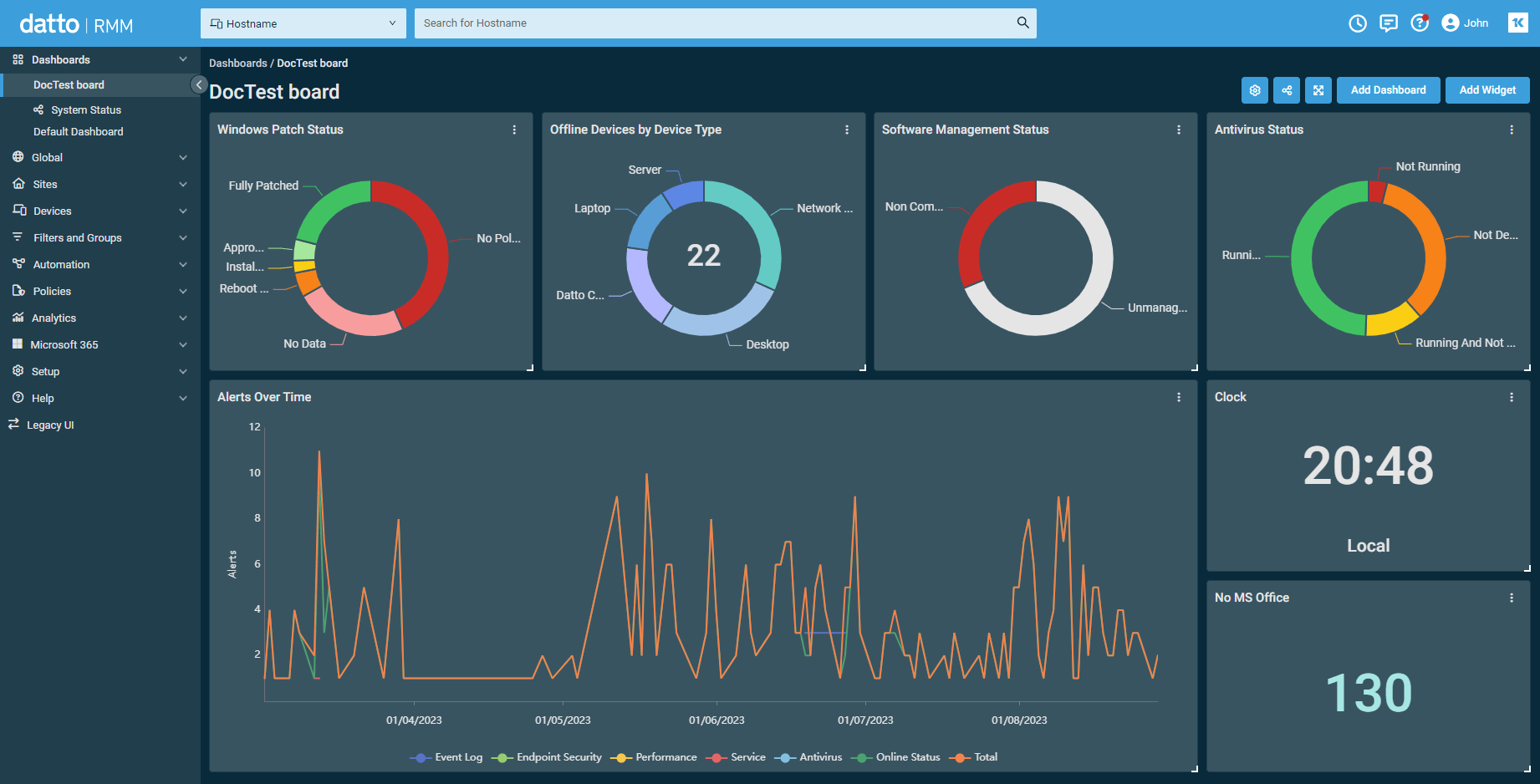
Downtime from failed or incomplete patches can disrupt business operations. Datto RMM provides automated rollback features and real-time ransomware detection. Thus, it ensures updates don’t introduce new vulnerabilities or system failures.
Main capabilities
- Cloud-based remote monitoring and patch management
- Automated patch deployment with rollback options
- Built-in ransomware detection
Cons
- Limited customization for patch policies
- Higher cost compared to other solutions
Pricing
Pricing is available upon request from Datto’s sales team.
7. NinjaOne Patch Management
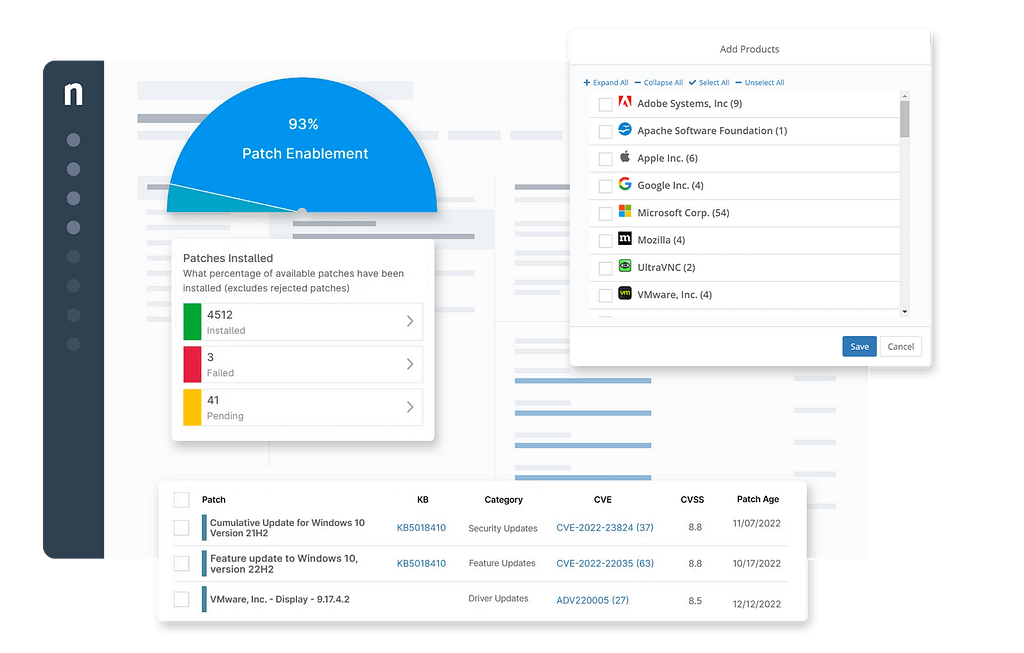
NinjaOne offers an intuitive patching solution for small and mid-sized businesses. One of its advantages is you don’t need extensive technical expertise to use it. Its automated workflows help streamline maintenance without overwhelming IT teams.
Main capabilities
- Automated patching across multiple OS platforms
- Patch scheduling and approval workflows
- Remote monitoring and management
Cons
- Limited reporting options
- Unreliable ticketing views
Pricing
Pricing is based on the number of endpoints and is available upon request.
I also did not like the reporting and the views in the ticketing system portion of it. For that reason, we took our ticketing to another platform. The views would not always show you what they were supposed to. I would have the option to see all open tickets and it would not show, or show me all closed and it would fail to load them. I had to work out of the all ticket view and that can be quite annoying to have to scroll through all the closed tickets to reach an older opened one.
8. SecOps Solution Patch Management
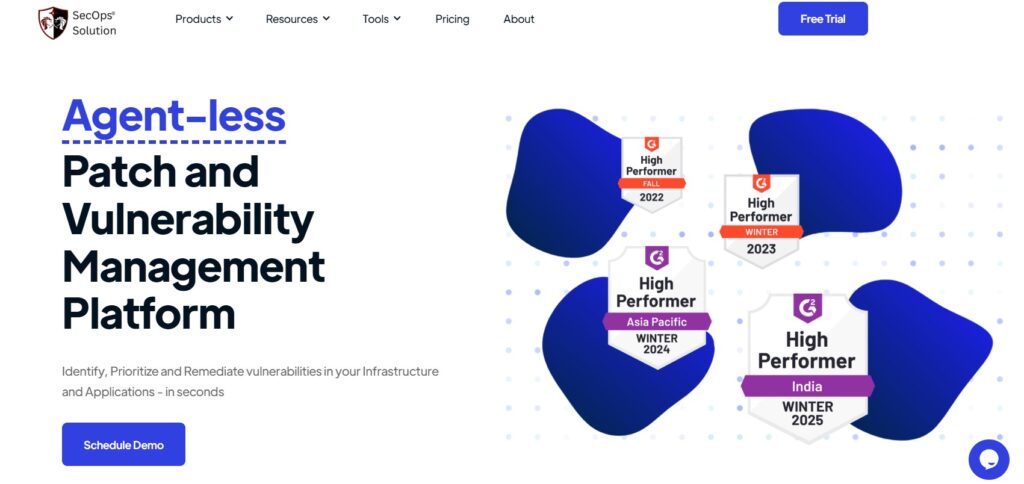
SecOps automates the detection, prioritization, deployment, and validation of software patches. It integrates with Security Operations (SecOps) workflows to minimize vulnerabilities, improve compliance, and reduce the risk of cyber threats.
Main capabilities
- AI-driven patch prioritization
- Zero-trust security model for updates
- Real-time vulnerability monitoring
Cons
- Requires high technical expertise to get the best results out of it
- Higher cost compared to simpler alternatives
Pricing
Custom pricing available upon request.
Frequently Asked Questions (FAQs)
Is Automox cloud-based?
Yes, Automox is a cloud-native patch management solution. System Administrators use it for remote management of endpoints across various operating systems.
Who does Automox compete with?
Automox competes with Heimdal, ManageEngine, Ivanti, ConnectWise, Pulseway, Datto, NinjaOne, and SecOps Solution, among others.
Why do users switch from Automox?
According to available reviews on Gartner, users might try to find an alternative to Automox because:
- sometimes device scanning takes too long
- user interface can be confusing during the patching process, says one of the users: “(…) there doesn’t seem to be any type of progress bar to tell how far the installation is or if its stuck. Usually during patching, the device will report an “Installing…” status in the Automox console. This can make it hard to tell when a patch is stuck due to a bad update or just taking a while.”
- remote control can be faulty
If you liked this article, follow us on LinkedIn, Twitter, Facebook, and Youtube.










 Network Security
Network Security
 Vulnerability Management
Vulnerability Management
 Privileged Access Management
Privileged Access Management  Endpoint Security
Endpoint Security
 Threat Hunting
Threat Hunting
 Unified Endpoint Management
Unified Endpoint Management
 Email & Collaboration Security
Email & Collaboration Security





